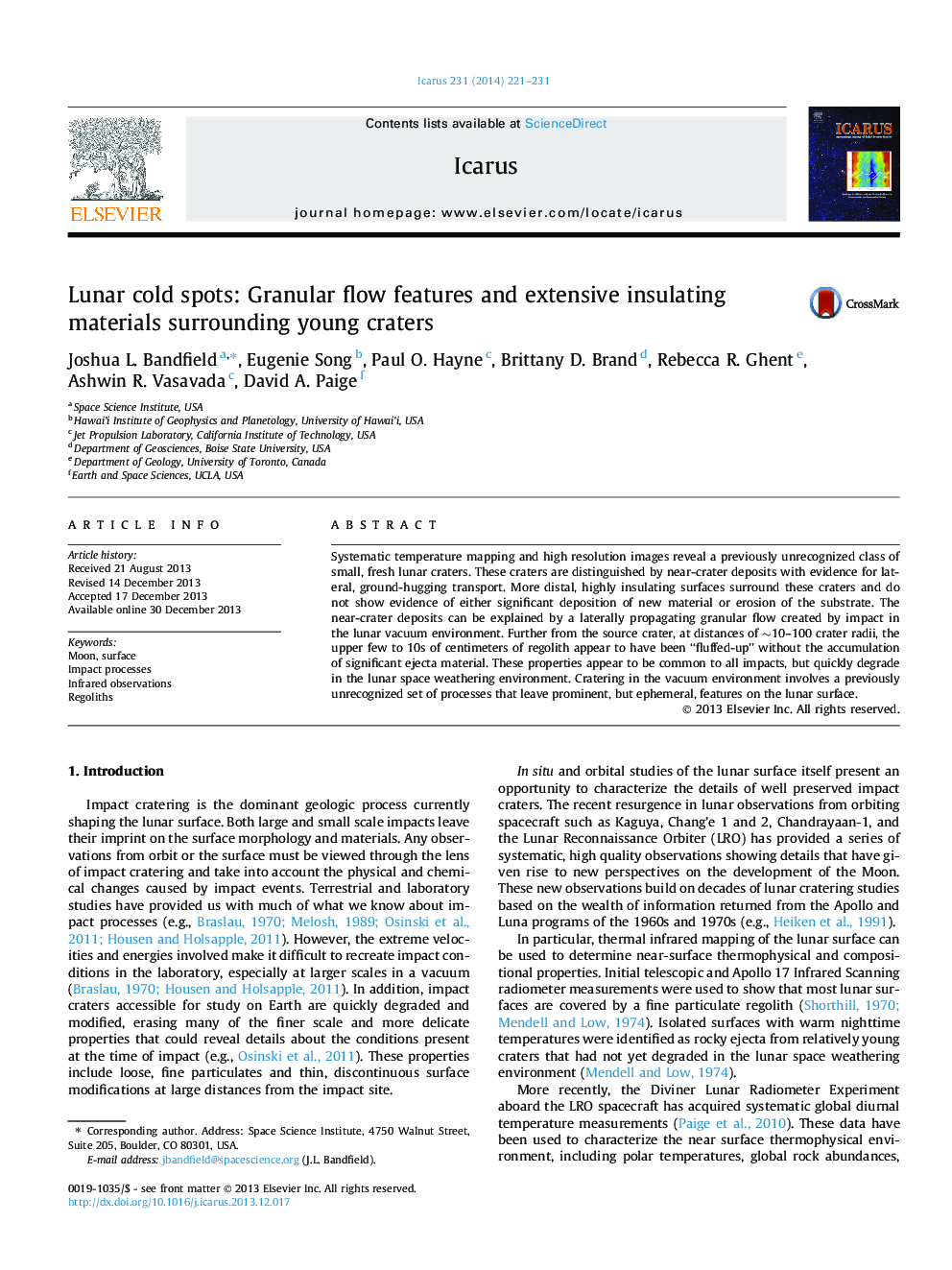| Article ID | Journal | Published Year | Pages | File Type |
|---|---|---|---|---|
| 8138591 | Icarus | 2014 | 11 Pages |
Abstract
Systematic temperature mapping and high resolution images reveal a previously unrecognized class of small, fresh lunar craters. These craters are distinguished by near-crater deposits with evidence for lateral, ground-hugging transport. More distal, highly insulating surfaces surround these craters and do not show evidence of either significant deposition of new material or erosion of the substrate. The near-crater deposits can be explained by a laterally propagating granular flow created by impact in the lunar vacuum environment. Further from the source crater, at distances of â¼10-100 crater radii, the upper few to 10s of centimeters of regolith appear to have been “fluffed-up” without the accumulation of significant ejecta material. These properties appear to be common to all impacts, but quickly degrade in the lunar space weathering environment. Cratering in the vacuum environment involves a previously unrecognized set of processes that leave prominent, but ephemeral, features on the lunar surface.
Related Topics
Physical Sciences and Engineering
Earth and Planetary Sciences
Space and Planetary Science
Authors
Joshua L. Bandfield, Eugenie Song, Paul O. Hayne, Brittany D. Brand, Rebecca R. Ghent, Ashwin R. Vasavada, David A. Paige,
